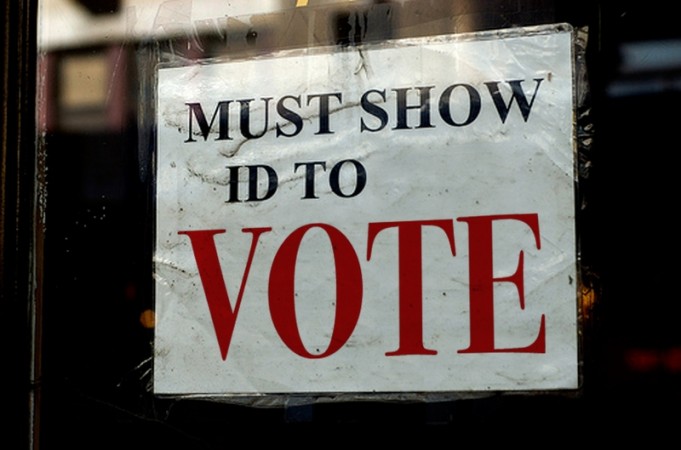A new study found that 11.2 percent of eligible nonvoting registrants were deterred from voting in the 2016 election because of restrictive voter-ID laws.
The study concluded that 16,800 to 23,250 voters in the Dane and Milwaukee counties — the two Democratic strongholds of Wisconsin — did not vote because of the voter ID law. The research is the latest indicator that such laws, pushed by Republican governors and state legislatures across the country, have succeeded in preventing some poor and black voters from turning out at the polls.
Conducted by two political-science professors at the University of Wisconsin, the study surveyed 288 people in heavily populated Dane and Milwaukee counties who had been on the voting rolls for the 2016 election, and found that 6 percent cited a lack of identification — which under Wisconsin law entails a driver’s license, passport, naturalization, or more-obscure documents — as the reason they did not vote. Many of the people surveyed did actually possess proper ID, but thought the law would bar them from voting anyway, and did not bother to cast a ballot.
The percentage of people casting ballots in Wisconsin in 2016 was the lowest level since 2000, and Hillary Clinton lost the state by just 22,748 votes.
“This study provides better data than previous efforts to measure the effects of ID laws, which have largely been based on aggregate turnout, matching registered voters to state driver’s license and ID databases, or looking at the number of rejected provisional ballots cast by voters without an ID,” said Kenneth R. Mayer, Professor of Political Science at UW-Madison and co-author of the study. “By asking nonvoters their reasons for not voting, and about what forms of ID they actually possess, we get a better understanding of how voter ID laws affect individuals, and what types of people are most deterred by the laws. The data show that poor and minority populations are affected the most.
“The main conclusion of the study is that thousands, and perhaps tens of thousands, of otherwise eligible people were deterred from voting by the ID law,” Mayer added. “The 11.2% figure is actually a lower bound since it does not include people who don’t even register because they lack an ID. And while the total number affected in Milwaukee and Dane Counties is smaller than the margin of victory in the 2016 presidential election, that is the wrong measure. An eligible voter who cannot vote because of the ID law is disenfranchised, and that in itself is a serious harm to the integrity to the electoral process.”




























